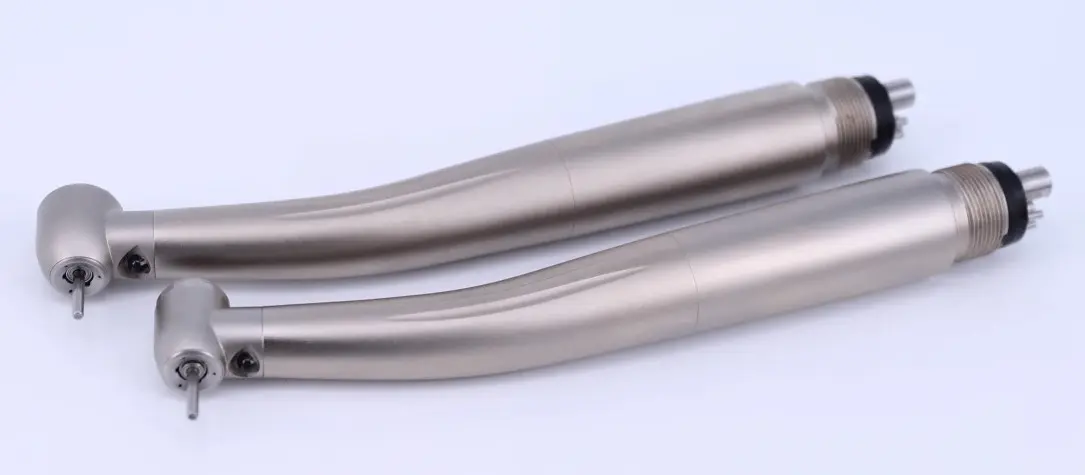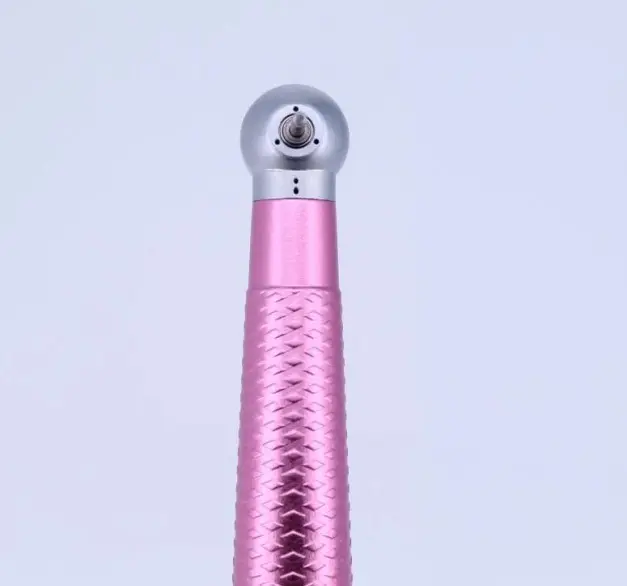How To Choose A Dental Handpiece?
When it comes to dental equipment, the dental handpiece is an essential tool for any dentist. It plays a crucial role in various dental procedures, including drilling, shaping, and polishing. Choosing the right dental handpiece is vital for the success of dental treatments and the overall patient experience. We will guide you to choose the right dental handpiece in this article.
What Are The High-Speed Handpieces?
High-speed handpieces are primarily used for cutting and drilling procedures. They operate at speeds of up to 400,000 revolutions per minute (RPM) and provide excellent precision and efficiency. High-speed handpieces are further divided into air-driven and electric handpieces, each with its own set of advantages and disadvantages.

What Are The Low-Speed Handpieces?
Low-speed handpieces are versatile tools used for a wide range of dental procedures, including polishing, prophylaxis, and endodontics. They work at speeds ranging from 5,000 to 40,000 RPM, providing more control and lower noise levels than high-speed handpieces.
Factors To Consider When Choosing A Dental Handpiece
Selecting the ideal dental handpiece is a decision that should be informed by a comprehensive understanding of the tool's features and capabilities. To ensure you fully satisfy your clinical needs and optimize patient outcomes, consider the following key factors during your selection process:
Noise Level
The noise level of a dental handpiece can significantly impact the patient's experience. Look for handpieces with noise-reduction features or those known for their quiet operation. This can make the situation more pleasant and less stressful for both the dentist and the patient.
Handpiece Weight
The weight of the handpiece can affect the dentist's comfort and maneuverability during procedures. Choose a handpiece that is balanced and comfortable in your hand, as too much weight can cause fatigue and impair precision. Consider lightweight solutions that provide convenience without sacrificing performance.

Compatibility With Attachments
Certain dental procedures require specific attachments, such as diamond burs, carbide burs, or prophylaxis angles. Ensure that the handpiece you choose is compatible with a wide range of attachments to accommodate different treatment needs. Because of its adaptability, you may execute a variety of treatments without the need for additional handpieces.
Handpiece Grip
The grip of the handpiece is essential for maintaining control and precision during dental procedures. Look for handpieces with ergonomic designs that provide a secure and comfortable grip. Rubberized or textured grips can improve stability and decrease slippage, allowing for more precise and efficient work.
Autoclavability
Sterilization is an essential component of dental practice. Examine the handpiece to see if it is autoclavable, which means it can resist the high heat and pressures of autoclave sterilization. Autoclavable handpieces are easier to clean and maintain proper infection control protocols, ensuring patient safety.

Availability Of Technical Support
Consider the availability of technical support from the manufacturer or supplier. Having access to trustworthy technical support in the event of an issue or technical difficulty may save time and decrease downtime. Look for firms or providers who offer timely customer service to answer your complaints as soon as possible.
Handpiece Warranty
A warranty is an important aspect to consider when investing in a dental handpiece. An extended warranty duration demonstrates the manufacturer's confidence in the quality of their goods. To make an educated decision, review the warranty's terms and conditions, including coverage for repairs or replacements.
Conclusion
For those in search of top-tier dental handpieces that meet a wide array of procedural demands, consider HAGER as your preferred provider. Our commitment to excellence is reflected in our diverse selection, which includes high-speed dental handpieces for efficient cutting and drilling, slow-speed handpieces for precision work, and various attachments and accessories. We are a leading professional dental equipment manufacturer in China, offering a wide range of dental equipment. Get in touch with us for more product details and quotations.

